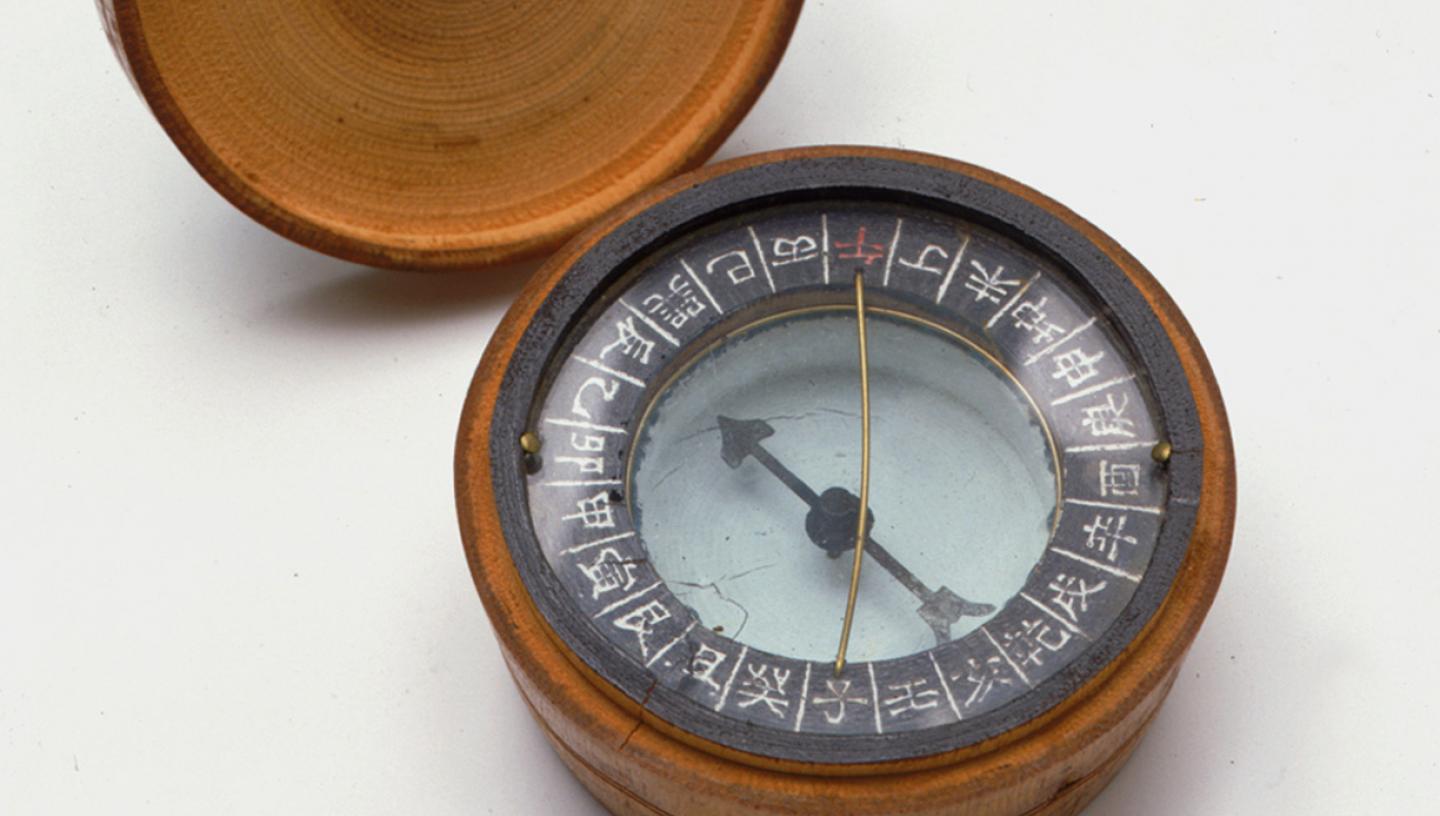
Non-European compasses
Compasses are mainly navigation aids in the West, but Asian and Middle Eastern cultures have also used them for spiritual guidance.
Early compasses used an iron needle magnetised by a piece of lodestone, or magnetite, a naturally occurring magnetic ore. In Western Europe, the first reference to the use of lodestone dates from the late 12th century, but in China the direction-finding properties of lodestone were known at least 1000 years earlier.
In the West, magnetic needles were used mainly as an aid to navigation. However, non-European cultures also used them for personal and spiritual guidance.
Visit the National Maritime Museum to see our collection of non-European compasses, including the following:
Geomancer's compasses, circa 1850
The ‘geomancer’ in the 19th century was an expert in the art of divination, searching for the vital energies believed to be found in nature. The magnetic compass was one of the tools of the geomancer. The many scales around the dial give information about the stars and planets as well as divination.
Through the traditional art of feng shui, the geomancer was employed in a variety of ways to maximise people's good fortune. The siting of a city, house, or a grave could be chosen by understanding the natural harmony of a particular place. The practice of geomancy is still considered important in Chinese society.
Astrological compasses, circa 1850
These mid-19th century astrological compasses were used as an aid for prediction by the astrologer. Through the position of the heavens at the time of birth the astrologer sought to predict the future.
As well as an instrument of prediction, the astrological compass could also be used as a navigation aid. Early Chinese mariners preferred to use personal experience and local knowledge of the seas, but compasses were used on long voyages or in bad weather. The inner rings are marked for use at sea.
In Islamic cultures, a qibla indicator used a magnetic needle to find the direction of Mecca.
Japanese ornamental compasses, circa 1850
These 19th century compasses are ornamental. Made of brass and mother-of-pearl, they were probably charms for watch-chains. Since they were not intended to be practical instruments the compass cards are only divided into four or eight basic compass points.